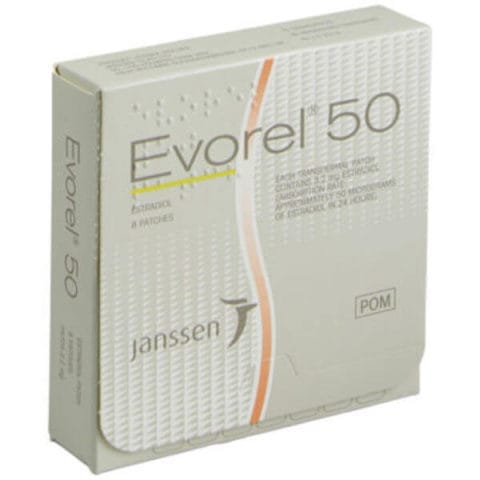- The Pill Box
- Posts
- Brittle bones
Brittle bones
What is osteoporosis and how is it treated?

What is osteoporosis?
Osteoporosis is a progressive bone disease where a person’s bones are weaker as they have a low bone mass and deterioration of bone tissue. They therefore have an increased risk of fragility fractures resulting from low-level trauma.

Gif by pudgypenguins on Giphy
Who is affected?
Bones are at their strongest during the early stages of adult life. From around the age of 35 years old people begin to lose bone. The loss of bone is a normal process; however, some people develop osteoporosis and lose bone at a much faster rate than normal and hence, these people are at greater risk of a fracture. Osteoporosis occurs more commonly in the following groups of people:
postmenopausal women 👩🏻
men over 50 years old 🧑🏽🦱
patients taking long-term oral corticosteroids
Other risk factors for osteoporosis are:
increasing age 👨🏼🦳
vitamin D deficiency and low calcium intake 🥛
physical inactivity 🏃♀️
low BMI
smoking 🚬
excess alcohol intake 🍷
parental history of hip fractures
early menopause
some diseases e.g., rheumatoid arthritis and diabetes
some medicines e.g., liver enzyme inducers which interfere with vitamin D metabolism
How is it treated?
The aim of osteoporosis treatment is to prevent fragility fractures through using a combination of lifestyle changes and drug treatment.
Bisphosphonates
These medicines slow the rate that bone is broken down in the body maintaining bone density and reducing the risk of broken bones. Examples include alendronic acid, ibandronic acid, risedronate and zoledronic acid. They come in the form of tablets, liquids or injections.
Bisphosphonates should always be taken on an empty stomach with a glass of water as they are poorly absorbed by the body in the presence of food and drinks. The patient will need to wait 30 minutes to 2 hours after taking this medicine before eating food or drinking any other fluids. They should also stand or sit upright for at least 30 minutes after taking oral bisphosphonates as they can irritate the oesophagus.
Common side effects include irritation to the oesophagus, swallowing problems and stomach pain. A rare side effect, however, is osteonecrosis of the jaw which can cause cells in the jaw bone to die. Therefore, a dental check-up may be required before a patient starts bisphosphonate treatment if they have a history of dental problems 🦷.
Bisphosphonates usually taken 6-12 months to work and may need to be taken for 5 or more years. Bisphosphonates should be reviewed after 5 years treatment of alendronic acid, risedronate sodium or ibrandronic acid, and after 3 years of zoledronic acid.

Calcium and vitamin D supplements
Calcium is the main mineral which is found in bones, so having enough calcium in a healthy, balanced diet is important for maintaining good bone health. The recommended daily calcium intake for adults is 700mg. Most people should be able to achieve this through a varied diet but osteoporosis patients may require additional calcium, usually as supplements.
Vitamin D helps the body absorb calcium. Most people should be able to get their daily recommended vitamin D intake of 10 micrograms a day from sunlight during mid spring until the end of September. However, a supplement should be considered for everyone including pregnant and breastfeeding women during autumn and winter as the recommended intake is difficult to achieve through diet alone. Supplements are also particularly important for older people who may be house bound and unable to get out in the sunlight during spring and summer months as well 🌞.

HRT
Hormone replacement therapy may be considered as an additional alternative option, but its use is generally restricted to younger postmenopausal women with menopause symptoms and are at high risk of fractures.
HRT has been shown to keep bones strong and reduce the risk of breaking a bone. Although, some types of HRT slightly increase the risk of breast cancer and the risk increases over time and HRT tablets can slightly increase the risk of blood clots so HRT is used in caution.

How is osteoporosis prevented?
People at risk can do certain things to prevent developing osteoporosis such as:
Exercise
The usual exercise recommendation of at least 150 minutes of moderate intensity aerobic activity e.g., walking, swimming or cycling per week applies for adults.
Furthermore, some types of exercise which are particularly beneficial for improving bone density and preventing osteoporosis are weight-bearing exercise and resistance exercise. Weight-bearing exercise is defined as exercise where your feet and legs support your weight e.g., running or dancing. Resistance exercise is defined as exercise using muscle strength e.g., press-ups or weightlifting.

Gif by streamonmax on Giphy
Healthy diet
Calcium is an essential mineral for maintaining healthy bones. Adults require a daily intake of 700mg. Some examples of calcium-rich food include dairy products (e.g., milk, yoghurt) and leafy green veg.
Vitamin D is also important as it aids the body’s absorption of calcium. It is recommended that adults consume 10 micrograms of vitamin D daily. Examples of vitamin D-rich foods include oily fish, red meat and egg yolks. Although, it may be difficult to get the recommended intake of vitamin D from food alone so a vitamin D supplement may be a good idea.
Stop smoking and drink less alcohol
Both smoking and excess alcohol intake (over 14 units a week and binge drinking) are associated with the development of osteoporosis. Therefore, by stopping smoking and drinking less alcohol it is possible to lower the risk of developing osteoporosis.
Get some sunlight
Sunlight triggers the production of vitamin D which helps the body to absorb calcium. It is therefore recommended to spend a short time in the sun each day. However, during the autumn and winter months vitamin D intake should come from diet since the sunlight isn’t strong enough for the body to make vitamin D.

Gif by sheepworld_de on Giphy
The PillBox

